Simulate International Electric Grids Using AC Power Supplies

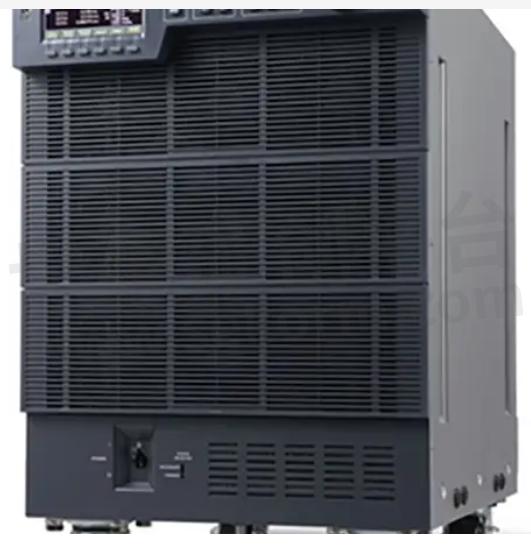
Much of our modern world runs on alternating current (AC). Our homes, offices, infrastructure, industries, technologies, and electronic devices are all dependent on AC, sometimes directly, sometimes indirectly. Testing instruments like AC power supplies ensure that all of them run reliably.
In this article, explore what AC power supplies do, where they are used, and how they work.
What is an AC power supply?
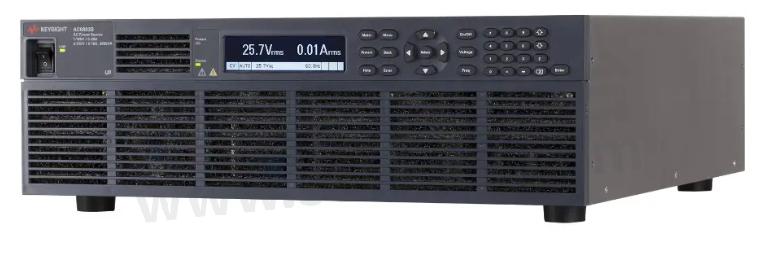
An alternating current is an electric current where the potential difference between two terminals periodically alternates between positive and negative values as each terminal's electrical potential rises above the other terminal's during one half of a cycle and falls below it during the other half. In other words, the polarity reverses periodically in an AC.
AC power is the most common type of electrical power for medium- and high-voltage applications. National electric grids around the world run on AC with a polarity reversal frequency of 50-60 hertz (Hz). The lighting and appliances in residential homes run on AC. Even our direct current (DC) devices like laptops and phones require DC power supplies and battery chargers that convert AC to DC. So testing the supply of AC power to different devices is a common need in many industries.
An AC power supply, or AC power source, delivers stable AC power with a specific output voltage, current, and frequency to a device or circuit. In some equipment, it's an essential component needed for normal functioning. But more often, it's used to supply AC power to a device for testing and quality control.
A programmable AC power source is a testing instrument that can simulate electric grid scenarios like brownouts, harmonics, and power surges to help engineers study the behavior and reliability of a device under test (DUT).
What are the different types of AC power supplies?
Whether they're being used for testing or normal operations, most AC power supplies are one of the following types.
Single-phase AC power supply
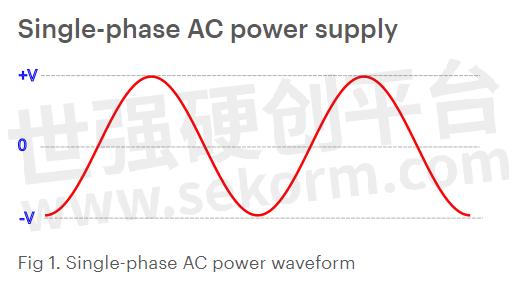
Single-phaseAC power supplies generate just one AC voltage between their two output terminals. Their output power is good enough for most home appliances and small devices.
In power supplies that are connected to the mains grid, one of the terminals is called live or hot and always carries the current to the load. The other terminal, called neutral, just acts as the return path for the current and is ideally at zero volts relative to the mains ground.
However, in some power supplies that are designed to be isolated, there may not be a designated neutral with a direct electrical path to the mains ground. Instead, they may have two live wires of opposite phases in a 120/240V split-phase arrangement.
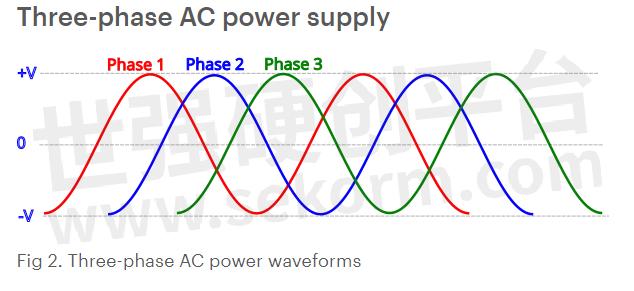
A three-phaseAC power supply generates not just one but three AC voltages, all with the same magnitude and frequency but phase-shifted from each other by 120 degrees. This enables it to deliver more power with less electrical loss than an equivalent single-phase system.
It's ideal for heavy-duty industrial equipment and electric motors that need a more constant supply of electrical energy at a constant voltage than what a single-phase supply can manage.
The three voltages are supplied through three live wires and a shared neutral wire that's grounded. Each hot wire carries one phase of the power supply.
AC/DC power supplies
A significant subset of modern power supplies for testing are far more versatile than the above categories and treat AC-to-AC power supply as just one of their functions rather than a distinct type of device. They may provide additional types of programmable power supply functions, like:
· DC-AC power supply: Such a power supply converts a DC voltage from a battery, solar array, or fuel cell to an AC voltage. This function, as well as the category of devices, is called an inverter.
· AC-DC power supply: This is a common function of modern power supplies as well as a common type of DC converter device. Most of our consumer device chargers and power adapters are converters that modify a sinusoidal AC voltage into a steady regulated DC voltage. Typically, they are either switching power supplies or linear power supplies depending on the mechanism they use to convert AC to DC outputs. In labs and testing, bench power supplies are popular examples of AC-DC devices.
· DC-DC power supply: These are essentially DC power supplies or DC voltage regulators that step up or step down a DC voltage to another voltage level or change the DC waveform.
Variable autotransformers
Variable autotransformers, or various, use autotransformers to supply a manually adjustable single-phase AC voltage to a device under test. They're not as sophisticated as normal power supplies nor have a wide range of output voltages. They are popular in some industries and hobbyist circles for testing or running specific types of equipment.
Which industries use AC power supplies?

Avionics
In avionics, three-phase AC voltages with high frequencies (like 400, 800, and even 5,000 Hz) are preferred because:
· Three-phase current requires smaller wiring and, therefore, less weight.
· Three-phase induction motors are common in aerospace applications.
· High frequency requires smaller transformers, which reduce overall weight.
· Rectifying high-frequency AC to DC requires fewer components and smaller capacitors, which again reduces the weight.
Since avionics uses high-frequency Three-phase AC power supplies to power different subsystems, the same kind of AC power sources are also used for testing them.
Defense
AC power supplies are used in many types of ground-based and ship-based defense equipment and weapons as well. AC power sources are used to test them for reliability and compliance with military standards.
Data centers
To optimize energy consumption, large data centers use tricks like powering servers with one phase of the main three-phase AC supply instead of using centralized battery-based uninterruptible power supplies. AC power supplies are used to verify that such servers can handle disturbances in the main supply.
Electronics
Programmable AC power sources are extensively used to test power adapters for consumer devices. They're also used to verify other test equipment like oscilloscopes, bench power supplies, and data acquisition systems that run on AC power.
Electric vehicles
The electric motors that power electric vehicles run on AC power. DC power from the onboard batteries is converted to high-voltage AC to drive the motors. To test them, AC power sources are used.
Railways
High-speed and other railway electrification systems use AC because of its lower transmission losses. AC power supplies are used for their normal operations as well as testing.
Manufacturing and industries
In manufacturing and industries with high inductive or capacitive loads, power factor correction (PFC) is an ongoing concern.
But what exactly is PFC? And how does it impact energy consumption and AC power supplies?
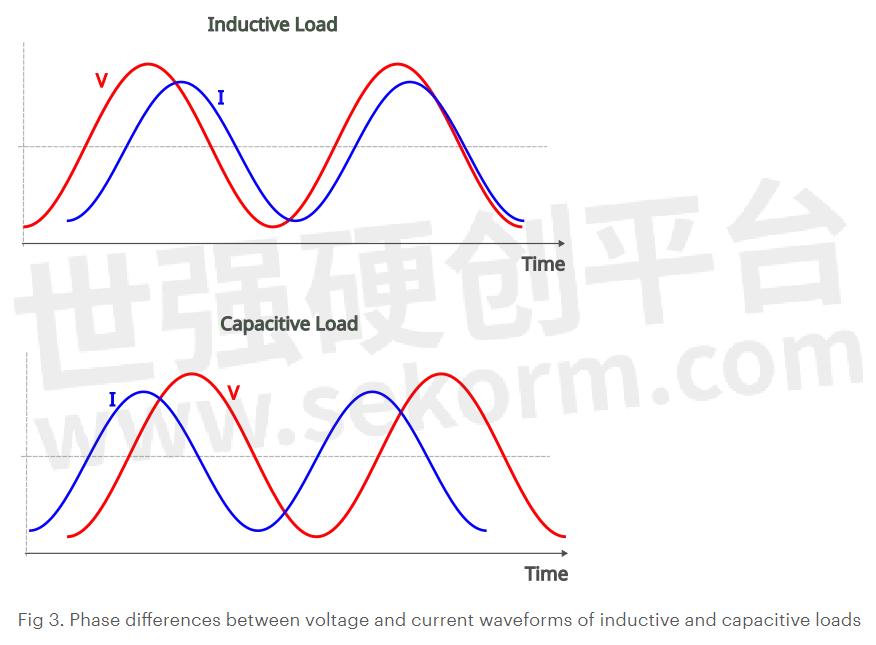
Essentially, every load draws some power measured as the product of voltage and current. However, both voltage and current are sinusoidal waveforms. If the load is inductive or capacitive, these two waveforms won't be in phase but will instead have a significant phase difference between them. To supply some nominal watts at a steady voltage for such loads, a higher level of current must be drawn from the utility. This ratio of actual power to the volt-amps (VA) drawn is called the power factor (PF).
PFC refers to techniques to reduce energy consumption by making the PF as close to one as possible. They include designing AC power supplies with low reactances. AC power sources are used to test such PFC techniques in industries.
What are the key features of a good AC power supply?
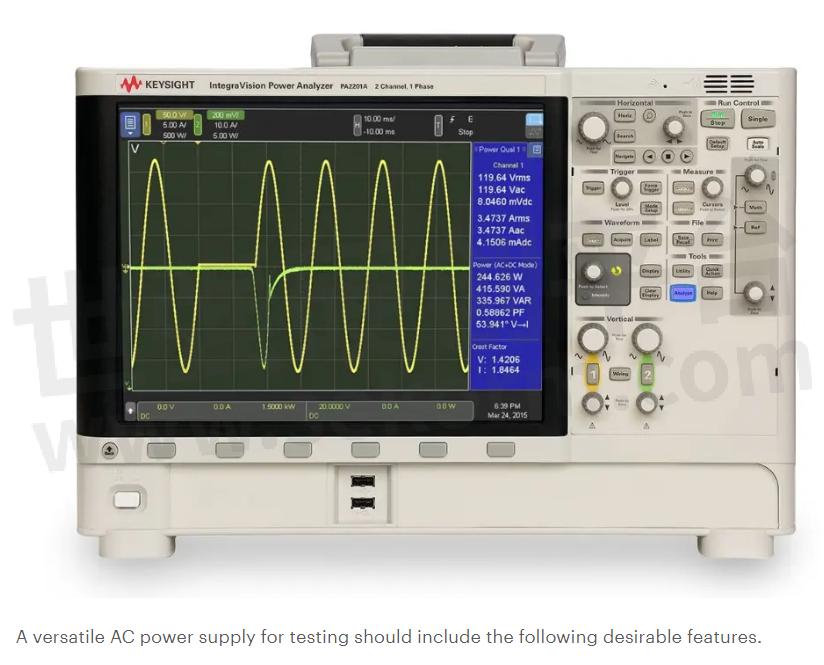
Report various electrical parameters
It must report these parameters at a minimum:
· Root mean square (RMS) voltage and current
· Peak voltage and current
· Phase
· Peak-to-peak voltage and current
· Actual power
· Apparent power (or VA)
· Power factor
Generate AC voltages and frequencies of different nations
AC voltages and frequencies vary widely around the world. A good programmable AC power supply for testing should be able to generate a wide set of AC voltages and output frequencies so that devices can be reliably qualified for multiple markets.
Simulate various AC voltage waveforms for testing and calibration
A good AC power supply must be able to generate multiple complex waveforms using a sequencer function. It must generate harmonics that simulate real-world electric power from the grid. It must be able to simulate surges, voltage changes, and dimmed phase sine waves.
Simulate power line disturbances (PLDs)
Power line stability is crucial for commercial equipment and consumer electronics to operate properly. A good AC power supply should be able to recreate PLDs like brownouts, power surges, sags, power line noise, AC cycle dropouts, and other such abnormal conditions to thoroughly test and qualify equipment.
Test inrush currents
When a device is switched on, for a short duration, it may draw a massive amount of current that's much greater than its steady-state operating current. This is called inrush current and may be the result of uncharged large capacitors, magnetic saturation in transformers, inductive kickback, or thermal effects. AC power supplies are used to test the effectiveness of inrush current limiting techniques.
Simulate unbalanced conditions
The three-phase AC from the mains grid is not always balanced due to different loading on each phase. Good three-phase AC power sources can simulate such conditions.
Connect seamlessly to other systems
Good AC power supplies should support common connectivity mechanisms like the universal serial bus, ethernet, and general purpose interface bus (GPIB) connectivity. Such connectivity enables them to be automated using remote configuration.
What are the key specifications of AC power supplies?
These are some key aspects to look at when selecting AC power supplies:
· Output power: This is the maximum power the AC power supply can deliver.
· Output voltage (VAC): This is the RMS voltage range available from the AC power supply.
· Output current: This is the maximum RMS current from the AC power supply.
· Output frequency: This is the range or set of frequencies supported at the output.
· Efficiency: This indicates how effectively the AC power supply converts input energy to output energy.
· Power factor: This represents the phase alignment of the AC voltage and current.
· Total harmonic distortion: This is a measure of the distortion in the AC waveform from the ideal sine wave.
· Load regulation: This indicates the stability of the output voltage or current when the load on the supply changes.
· Line regulation: This indicates the stability of the output voltage or current when the input voltage fluctuates.
· Calibration certificates: They indicate that the power supply has been tested according to international calibration standards.
How does an AC power supply work, and what are its components?
For regulating the output AC voltage and current, a typical AC power supply requires the following components:
· A transformer steps up or steps down the input voltage to the desired output voltage.
· A voltage and current regulator circuit ensures that the transformer's output is a stable voltage and current.
· Filtering circuitry removes any noise from the output signals.
However, these elements don't suffice for changing the AC frequency. For changing the frequency, AC power supplies also have an inverter circuit that works as follows:
· A rectifier converts the AC waveform to a DC waveform.
· Semiconductor-based switching transistor circuits switch on and off rapidly to create a pulsing signal of high frequency.
· Pulse width modulation is used to get closer to a sine waveform.
· Filtering and smoothing circuits convert the modulated signal to a new output AC waveform.
What are some trends and advances in AC power supply technology?
Modern AC power supplies are increasingly adopting intelligent features and energy-efficient designs. They include:
· standby/sleep modes and built-in power factor correction to reduce wasted energy and operational costs
· flexible AC transmission systems for use in smart grids
· Self-monitoring of operational conditions, self-diagnosis of faulty or abnormal conditions, and automated alerting
· Sensing the power needs of the devices and adjusting their outputs accordingly
A Keysight AC power source for every need
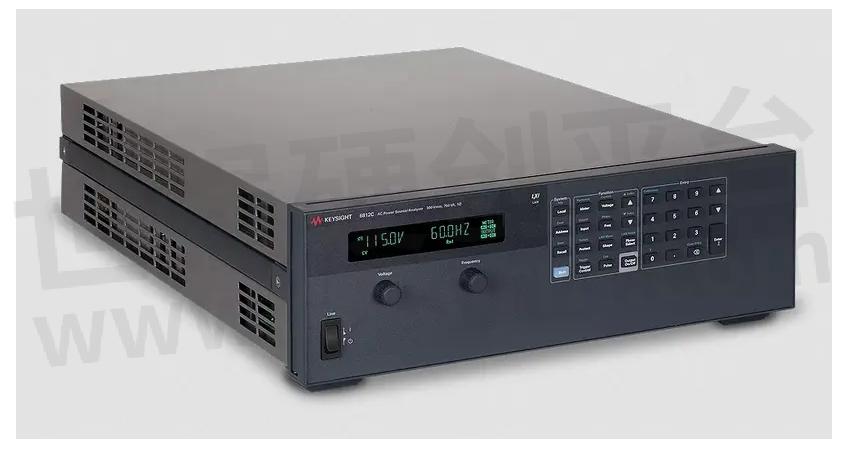
In this article, we learned about the functions, construction, and uses of AC power supplies.
Keysight has a variety of high-power, high-performance AC power sources, and power supply testing instruments, including:
· three-phase AC power supplies like the top-line AC6918H that can deliver up to 320 Vrms, 18 kVA of power, and 5,000 Hz output frequency
· the AC6800 series of single-phase AC power sources
· The IntegraVisionbenchtop AC power analyzers analyze both single-phase and three-phase output waveforms
- +1 Like
- Add to Favorites
Recommend
- Keysight Technologies Acquires Quantum Benchmar, Augmenting Keysight‘s Quantum Portfolio
- Keysight First to Gain OmniAir Qualified Test Equipment Status, Accelerating C-V2X Device Certification
- Keysight First to Gain GCF Approval of Cases for Validating 5G New Radio mmWave Devices in Standalone Mode
- Keysight Massively Parallel Board Test System Selected by LACROIX in Automotive Printed Circuit Board Manufacturing
- Keysight, TIM and JMA Wireless Join Forces to Showcase O-RAN Technology at Mobile World Congress 2021
- Keysight, Xilinx and Cisco Showcase Solutions that Support Smooth Migration from 4G LTE Networks to 5G Open RAN
- Keysight Unveils the First Media Access Control Security Test Solution for High Speed Ethernet
- Keysight, MediaTek Join Forces to Establish 5G Connectivity Based on 3GPP Release 16 Specifications
This document is provided by Sekorm Platform for VIP exclusive service. The copyright is owned by Sekorm. Without authorization, any medias, websites or individual are not allowed to reprint. When authorizing the reprint, the link of www.sekorm.com must be indicated.



























































































































































































































































































































































































































































































































































































































































































































































































































































































